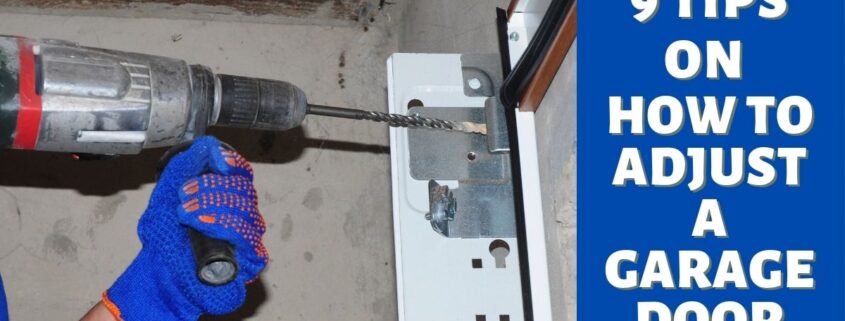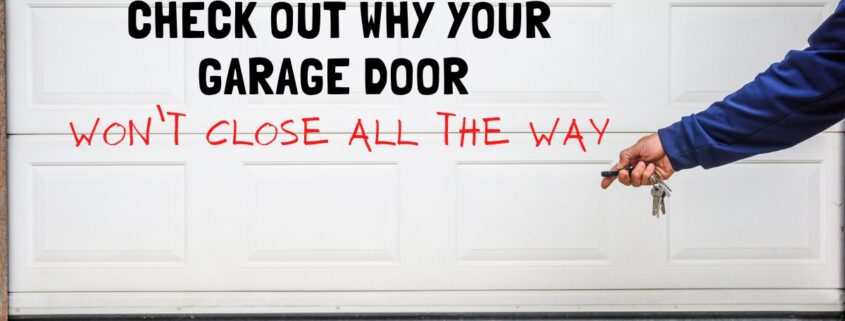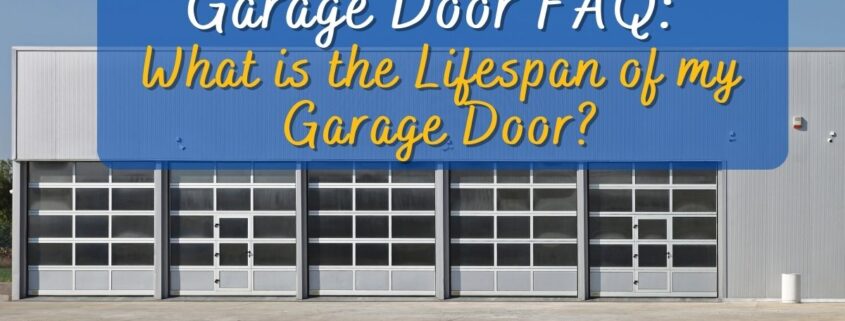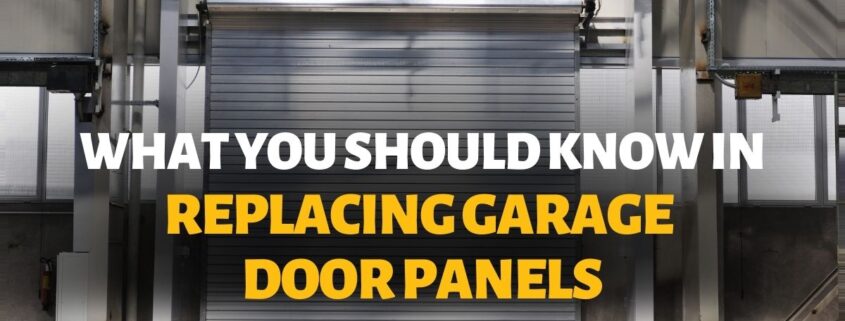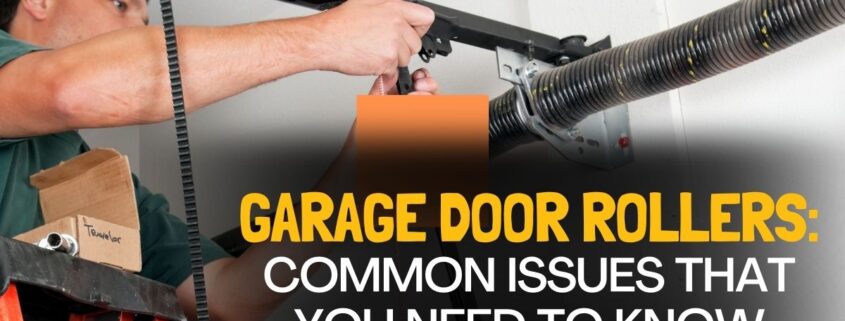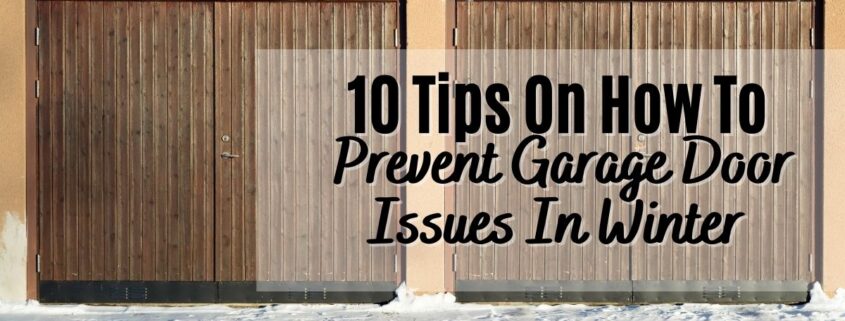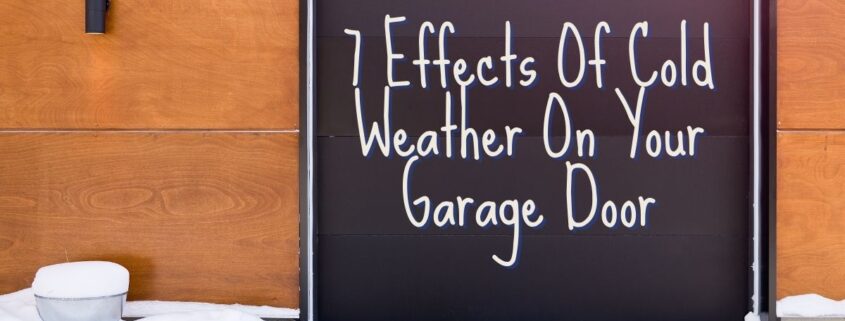9 Tips On How To Adjust A Garage Door
A garage door is quite essential and so convenient, be it automatic or manual. However, if you cannot maintain your door and its components, issues might arise. If ever this happens, maybe you just need to adjust the garage door to properly function. Though some are pretty easy to solve, others may need the help of an expert.
Knowing how to adjust a garage door is crucial especially when some issues strike. Trying to solve it yourself first will spare you from spending bucks on repairs! So please read the full article below should your garage door stop functioning.
How To Adjust A Garage Door
- Prepare your safety paraphernalia such as safety glasses, thick gloves, and a hard hat. Other tools that you may need are a C-clamp, adjustable wrench, ladder, rag, moistened cloth or old toothbrush, and a sweeping brush.
1) Check and assess your door’s situation.
- You need to know first what’s causing the problem. This will help you identify the appropriate solution for your garage door.
- Issues might be the tracks, springs, or cables.
- You may begin examining the garage door tracks first. Problems arise if they aren’t aligned correctly or if they are dusty or dirty. Then move to the next step, otherwise move to the 3rd step.
2) It’s time to fix if there are any damaged tracks.
- For dirty tracks, sweep then clean with a moistened cloth. You may also use an old toothbrush to scrub the grime from the tracks.
- Wipe the track with a dry rag if it is not that dirty.
- After cleaning, try to open and close your door to see if it will operate smoothly.
- For warped tracks, replacement is necessary.
3) Check what type of spring your door has.
- Check the springs if the tracks seem fine. The two types are torsion and extension (side-mounted) springs.
- For bigger doors (with a width of more than 10 feet), torsion springs are widely used. The springs are located over the door and along the shaft and parallel together with the upper door rim.
- For safety reasons, it’s best to call a garage door specialist especially if you have torsion springs. It can be very risky if you get it wrong.
- The extension springs are positioned above the track on each side of the garage door to run parallel to the track. Moreover, they are attached to a pulley and are held in place by a cable.
4) Identify the adjustment you need to make to the spring tension.
- The kind of adjustment you’ll make to your springs will depend on your door’s action.
- If the garage door isn’t closing all the way or if it’s opening too fast, try decreasing the spring tension.
- The door is not closing evenly, try adjusting the spring tension on the side wherein you can see a gap.
- If the door is not easy to open or if it closes too fast, increases the tension.
5.) Prepare your workstation.
- Open the door of your garage as far as it will go before it’s halted by the stop bolt or stop tab.
- For automatic doors, you need to disconnect them first from the opener.
- Shut off the power to your door. Then pull the cord positioned on the backdown and backward to maintain the spring locked open. This will remove tension on your springs and will allow you to open your garage door all the way.
- Don your safety gear such as safety glasses, hard hat, and gloves.
- Put the C-clamp under the roller located at the bottom of the door.
- You can also use locking pliers and put one under each of the rollers at the bottom.
- Make sure that your door is held securely in place while working.
6.) Adjust the tension on your garage door springs.
- Once secured, remove the spring hook that is attached to the track hanger. Make sure that there is no tension in the springs before doing anything.
- Prepare the ladder and loosen the screws or the nut using an adjustable wrench.
- This will now allow you to move the spring hook to a different position of the hole on the track hanger.
- The movement of the hook changes the tension in your door’s springs. If you move the spring to a lower hole, it will decrease the tension. Moving it to a higher hole increases the tension.
- As mentioned in step 4, if the door closes too fast or is not easy to open, move the hook up one hole. If the door is not easy to shut or closes too quickly, try moving the hook down one hole. Then change the nut and use the wrench to tighten it.
If it’s closing evenly, you can make changes to the door springs on both sides. If only one side of the door has a gap, only adjust that spring.
- For your safety, be steady and slow in handling the hook and avoid moving it more than one hole at a time.
7.) Check the adjustments you made to your garage door.
- You can now detach the clamp from the roller. Then lower the door.
- If the adjustment hasn’t fixed the issue, repeat steps 5 & 6. Make sure you re-clamp the door before moving the hook again. Remember: move it up or down one hole at a time only.
8.) Adjust your door’s spring tension.
- If lowering or raising the spring hook doesn’t get the appropriate tension, make better adjustments. You can calibrate the cable that is located inside the springs.
- In adjusting the cable, adjust the knot or clamp attaching the cable to the track or hook. If you want to augment the tension, make the cable shorter. Making it long will reduce the tension.
- Take off the clamp. Try to test the door again and continue fine-tuning the cable inside the spring.
9.) Once it’s set, you may use your door again.
- Remove the clamp or locking pliers than pull the emergency cord. This will release the spring and reattach the door to the opener.
- For an automatic garage door opener, try switching the power back on. The spring tension usually affects the motor. If it’s too tight, more power is needed to shut the door. Furthermore, looser springs mean less power is needed to raise the garage door.
Time to Fix Your Garage Door. Our Team is Willing to Help!
Having regular maintenance will prevent you from having expensive repairs. After doing your part and your garage door is still facing some issues, safer to call in a garage door professional.
Overhead Door Company of the Inland Empire has a team of experienced technicians who can assess well, make adjustments, and do major garage door repairs. Please contact us today.

